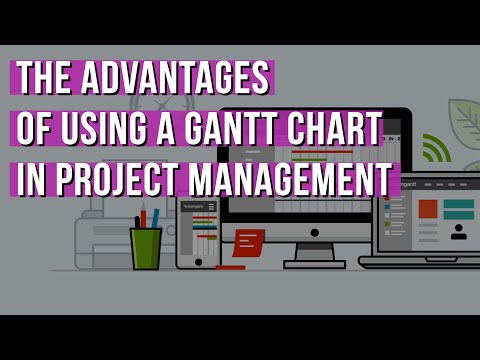Benefits of Gantt Chart
A Gantt chart is a powerful project management tool that provides a visual representation of tasks, schedules, and timelines. It offers numerous benefits that can greatly enhance project planning, coordination, and execution. In this article, we will explore the advantages of using a Gantt chart and how it can help you stay organized, track progress, and achieve project success.
Improved Project Planning
One of the key benefits of a Gantt chart is its ability to facilitate effective project planning. By breaking down complex projects into smaller tasks and assigning them specific start and end dates, you can create a detailed project timeline. This allows you to visualize the entire project at a glance and identify potential bottlenecks or scheduling conflicts.
Enhanced Task Coordination
With a Gantt chart, you can easily coordinate tasks among team members and ensure everyone is on the same page. By clearly defining task dependencies and assigning responsible individuals, you can streamline project workflows and prevent delays. The visual representation of task relationships in the Gantt chart helps team members understand the order in which tasks need to be completed.
Real-Time Progress Tracking
Tracking project progress is essential for timely completion and effective resource allocation. Gantt charts provide a real-time overview of task completion, allowing you to monitor progress and identify any deviations from the planned schedule. This enables you to take immediate corrective actions and keep your project on track.
Resource Optimization
By visualizing task durations and resource allocation in a Gantt chart, you can optimize resource utilization. It helps you identify periods of resource overload or underutilization, enabling you to make necessary adjustments. This ensures that resources are allocated efficiently, leading to improved productivity and cost-effectiveness.
Effective Communication
A Gantt chart serves as a powerful communication tool, especially when working with stakeholders or clients. It provides a clear and concise overview of project timelines, milestones, and progress. By sharing the Gantt chart with relevant parties, you can effectively communicate project status, priorities, and potential risks.
Risk Management
Identifying and managing risks is crucial for project success. Gantt charts allow you to visualize the critical path and identify potential bottlenecks or dependencies that may pose risks to the project timeline. By proactively addressing these risks, you can minimize their impact and ensure smooth project execution.
Increased Accountability
A Gantt chart promotes accountability among team members by clearly assigning tasks and deadlines. With a visual representation of responsibilities, everyone is aware of their role in the project and the expected timeline for task completion. This fosters a sense of ownership and encourages individuals to meet their commitments.

In conclusion, utilizing a Gantt chart offers numerous benefits for project management. From improved planning and coordination to real-time progress tracking and effective communication, it serves as a valuable tool for project success. By leveraging the power of Gantt charts, you can optimize resource utilization, mitigate risks, and enhance accountability. Incorporate this powerful tool into your project management toolkit and experience the benefits firsthand.
Frequently Asked Questions
1. What is a Gantt chart?
A Gantt chart is a visual representation of a project schedule that shows the tasks, their durations, and their dependencies.
2. How can a Gantt chart benefit my project?
A Gantt chart can help you plan, schedule, and track your project effectively. It provides a clear overview of tasks, timelines, and dependencies, making it easier to manage and coordinate different aspects of the project.
3. Can a Gantt chart help with resource allocation?
Yes, a Gantt chart can assist in resource allocation by showing when and how resources are needed for each task. This helps in preventing overallocation or underutilization of resources.
4. Does a Gantt chart help in identifying project milestones?
Absolutely! A Gantt chart highlights important project milestones, allowing you to track progress, identify bottlenecks, and ensure timely completion of key deliverables.
5. Can a Gantt chart assist in managing project dependencies?
Yes, a Gantt chart visually represents task dependencies, indicating which tasks must be completed before others can start. This helps in understanding the critical path of the project and managing dependencies effectively.
6. How does a Gantt chart improve communication within a project team?
A Gantt chart provides a shared visual representation of the project timeline, tasks, and responsibilities. This improves communication by ensuring everyone is on the same page, understanding project progress, and collaborating more effectively.
7. Can a Gantt chart help in identifying potential project delays?
Definitely! A Gantt chart allows you to see the planned start and end dates of each task. By comparing the actual progress with the planned schedule, you can identify any delays and take necessary actions to mitigate them.
8. Is it possible to make adjustments to the project timeline using a Gantt chart?
Yes, a Gantt chart is flexible and allows you to make adjustments to the project timeline easily. You can modify task durations, dependencies, and resource assignments to accommodate changes or unexpected events.
9. Can a Gantt chart help in visualizing project progress?
Absolutely! A Gantt chart provides a visual representation of completed tasks, ongoing activities, and upcoming work. This allows you to easily track project progress and communicate it to stakeholders in a clear clear and concise any software available to create Gantt charts?
Yes, there are several software options available that allow you to create Gantt charts easily. Some popular ones include Microsoft Project, Asana, Trello, and Smartsheet.



